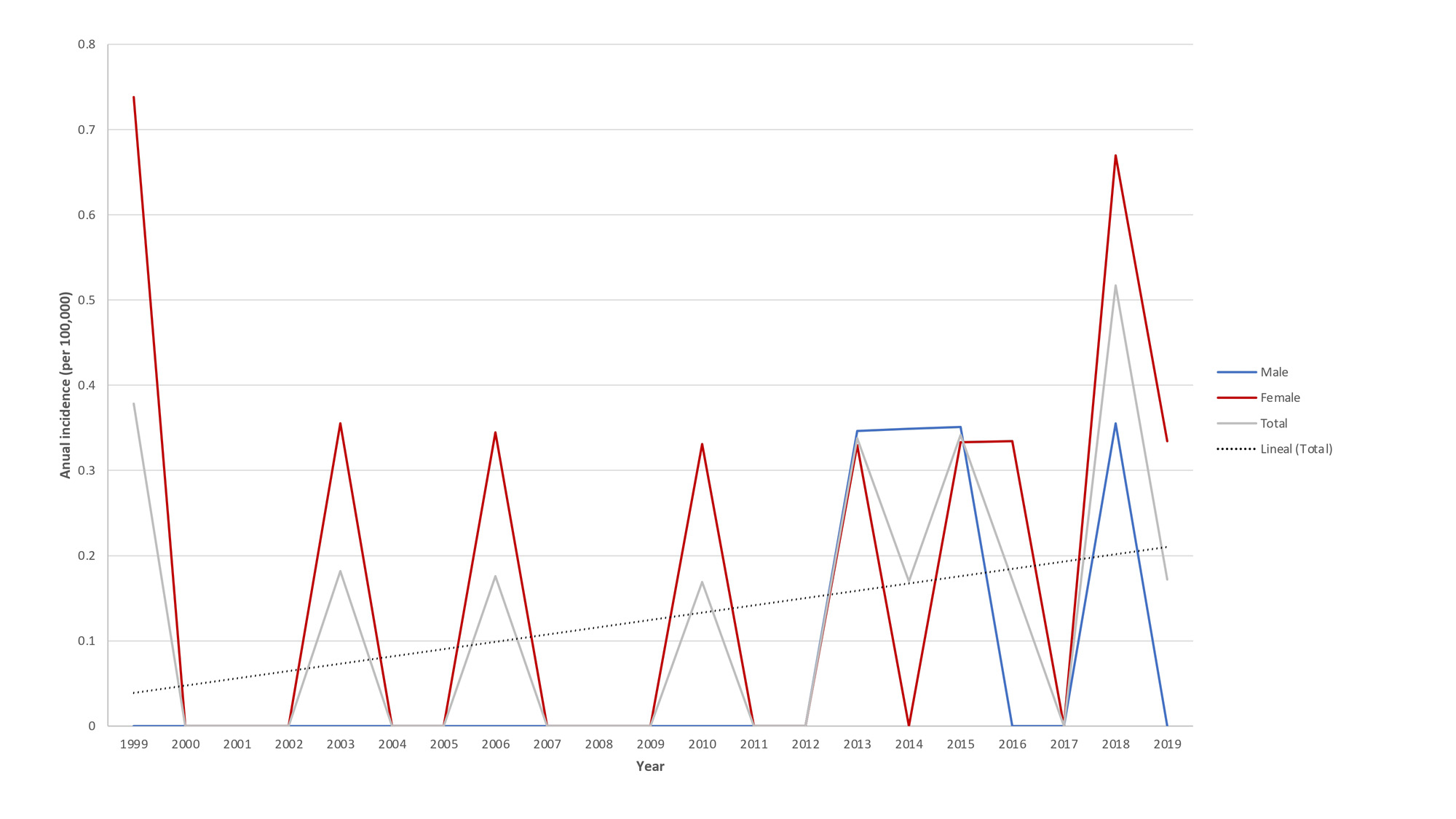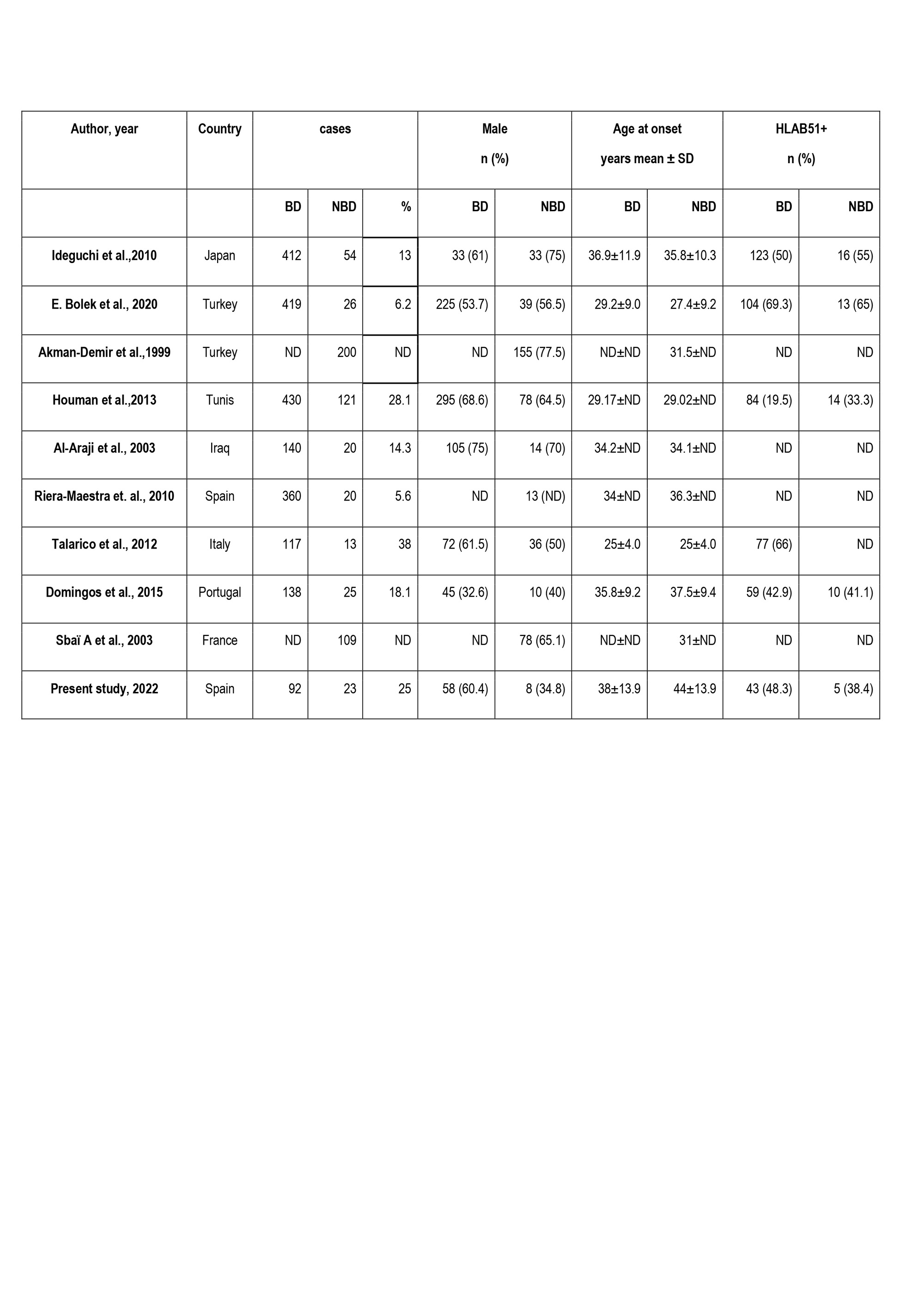Session Information
Date: Sunday, November 12, 2023
Title: (0691–0721) Vasculitis – Non-ANCA-Associated & Related Disorders Poster I
Session Type: Poster Session A
Session Time: 9:00AM-11:00AM
Background/Purpose: Behçet’s Disease (BD) incidence varies widely worldwide. Neurobehcet’s disease (NBD) is one of the most severe manifestations of BD. Data on NBD incidence is scarce and contradictory.
Our Objective was to estimate NBD incidence in Northern Spain.
Methods: Population-based cohort study of 120 patients diagnosed with BD in Northern Spain, between January 1, 1999, to December 31, 2019. Finally, 92 were included according to the 2013 International Criteria for BD(2). NBD was diagnosed according to the International Consensus Recommendation criteria (3). The incidence of NBD between 1999-2019 was estimated by gender, age, and year of diagnosis. Annual incidence is expressed as cases per 100,000 people.
Results: NBD was diagnosed in 23 of 92 (25%) patients (15 women/8 men) (mean±SD age: 44±13.9 years). Ten (43.5%) patients had parenchymatous NBD, 10 (43.5%) had non-parenchymatous NBD and 3 (13%) cases had mixed NBD. Annual incidence of NBD in Northern Spain in the 1999-2019 period was 0.13 per 100,000 people [95% CI: 0.11-0.26] (0.14 [0.04-0.23] in men, 0.24 [0.12-0.37] in women). There were variations in annual incidences, with a minimum value of 0.08 in 2009-2010 and a maximum of 0.26 in 2017-2018 (Figure).
The highest incidence rate was observed in men in the 20-29 years group (0.03 per 100,000 people) and in women in the 30-39 years group (0.07per 100,000 people). On the other hand, the lowest incidence rate was observed in the 10-19 years group and 80-89 years group (0.008per 100,000 people). When analyzed the incidence rate stratified by age, there were no statistical differences according to gender. The annual incidence studied by year showed an annual peak incidence over the last 20 years. A comparison between different geographical areas was made (Table). NBD frequency ranges from 5.6 to 38%. It is usually more frequent in male young adults.
Conclusion: NBD frequency varies widely. The epidemiological characteristics of NBD in our series are similar to other except for gender predominance. Like in other immune mediated diseases this cyclic pattern in annual incidence could possibly be related to infectious environmental factors.
Abbreviations: BD: Behçet’s disease, NBD: Neurobehçet’s disease, ND: Non data
To cite this abstract in AMA style:
Benavides F, Herrero-Morant A, Martin-Varillas J, Alvarez Reguera C, Sanchez-Bilbao L, Martinez-Lopez D, Fernandez R, Ferraz Amaro I, Hernandez J, Blanco R. Incidence of Neurobehçet Disease in Northern Spain 1999-2019. a Population-based Study [abstract]. Arthritis Rheumatol. 2023; 75 (suppl 9). https://acrabstracts.org/abstract/incidence-of-neurobehcet-disease-in-northern-spain-1999-2019-a-population-based-study/. Accessed .« Back to ACR Convergence 2023
ACR Meeting Abstracts - https://acrabstracts.org/abstract/incidence-of-neurobehcet-disease-in-northern-spain-1999-2019-a-population-based-study/


